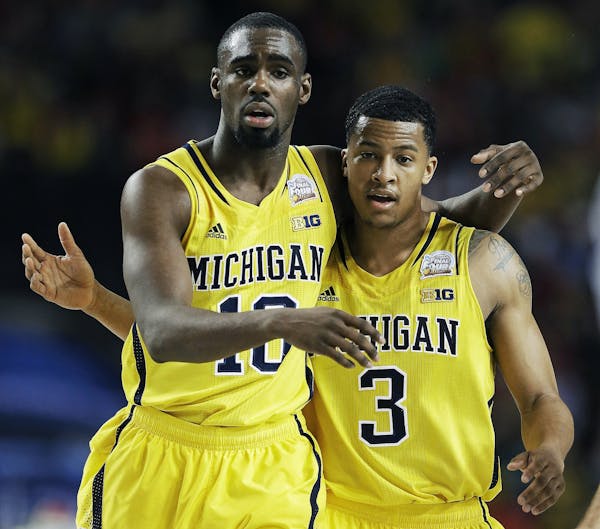The Big Ten Conference might be losing a handful of high-profile players to early entry in the NBA draft and dozens more to graduation, but it shouldn't stop business as usual for the perennially strong league in 2013-14.
A few months ago, the 12-team conference was considered by most analysts to be the nation's best, housing seven NCAA tournament teams and at least five top-25 squads through most of the season. While the Big Ten might lose that prestigious designation, it's unlikely to fall far — after all, reloading and quickly developing stars is what the Big Ten does as proficiently as any league.
"Last year, they were clearly the best conference in the country," CBS Sports basketball writer Jeff Borzello said. "This year, it won't be as clear but they'll still have multiple teams in Final Four contention."
Elite players Deshaun Thomas (Ohio State), Trey Burke and Tim Hardaway Jr. (Michigan), Cody Zeller and Victor Oladipo (Indiana) are all entering the draft early and will participate in the NBA combine starting Thursday in Chicago along with other pro basketball hopefuls. But there is still a plethora of talent in tow that will both keep the league competitive as a whole and most likely keep the typical league giants on top.
The Atlantic Coast Conference could end up being the consensus "best league," NBC basketball writer Rob Dauster said, but that has more to do with the strengthening of the ACC — which adds Syracuse, Notre Dame and Pittsburgh — than any weakening of the Big Ten.
While Michigan loses two of the best players in the country, the Wolverines keep rising stars Mitch McGary — who exploded to average 14.3 points and 10.7 rebounds a game in the NCAA tournament — and Glenn Robinson III. Ohio State has cultivated the next wave with LaQuinton Ross and Lenzelle Smith Jr. while dynamic point guard Aaron Craft still has another year. Michigan State returns everyone except Derrick Nix, boasting a roster featuring Gary Harris, Adreian Payne and Keith Appling, all of whom decided to stay.
"They were definitely the big winner, I think in terms of the people they got back," Dauster said of the Spartans. "Gary Harris is going to have a huge season next year. … But I think the key for them was getting Payne back — because they didn't really have anyone else in the middle."
Many analysts agree that Michigan and Michigan State will be in the national top 10 next year — Sports Illustrated's Luke Winn has them at No. 5 and No. 2, respectively, in his post draft deadline power ranking. Ohio State and Wisconsin should sit comfortably in the top 25.
The one top-five finisher from a year ago that seems most impacted is Indiana, which gets depleted not just by superstars Oladipo and Zeller declaring for the draft but also glue guys Jordan Hulls and Christian Watford graduating and role players Remy Abell and Maurice Creek announcing they will transfer. Even so, the Hoosiers have found themselves lingering in top-25 talk because their six-man recruiting class is ranked sixth in the nation. Indiana's incoming brawn is one of four Big Ten recruiting classes ranked in the top 30 nationally by Rivals.com, with Michigan (12), Illinois (17) and Purdue (23) rounding out the rest.
"Indiana will take the biggest fall from this past year," Borzello said. "They lose so much — and the top of the league is still going to be pretty good. But they do return guys that can contribute — Yogi Ferrell, Will Sheehey, guys like that — but they're going to bank on their freshmen carrying a huge load."
So what does this mean for the Gophers? Well, only that things won't suddenly be easier just because some of the top players from other teams are leaving. With the usual contenders regrouping and the bottom half threatening to improve as well, the grind won't lessen for new coach Richard Pitino's crew.
But then, that's the Big Ten.
Police clear out a migrant camp in central Paris. Activists say it's a pre-Olympics sweep
Legendary rugby league star Wally Lewis appeals for concussion and CTE awareness support
LeBron James rants at NBA's replay center for calls, Lakers lose on buzzer-beater, trail Denver 2-0
Hyman gets 1st playoff hat trick, McDavid has 5 assists as Oilers beat Kings 7-4 in Game 1

